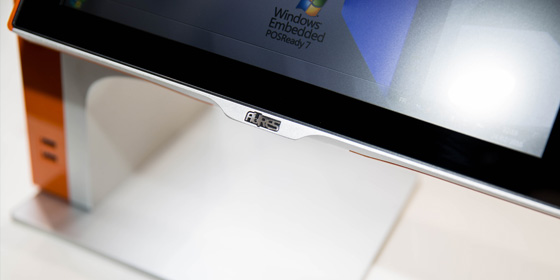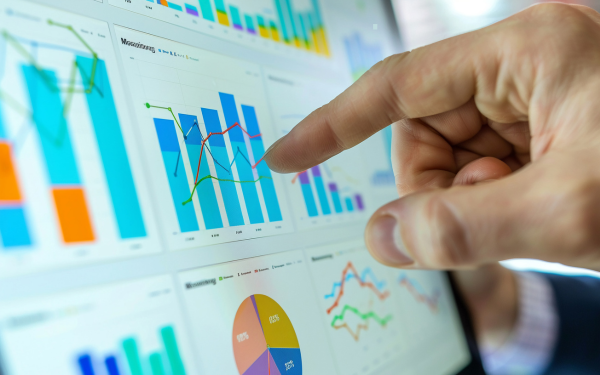Retail’s Data Revolution: How Real-Time Data Collection Became Possible in Stores
Data is the digital currency that drives modern retail. It empowers retailers to understand their customers better, create more personalised experiences, forecast demand, put the right products in the right places, inform pricing and marketing strategies, and plenty more besides.
Put simply, data has given retailers a level of insight into their businesses that has helped take decision-making to another level. With hindsight, it’s easy to wonder how vendors in pre-digital times got anything done – weren’t they just shooting in the dark?
Not that data-driven retail is necessarily a level playing field. In particular, bricks-and-mortar operators have long felt themselves at a disadvantage compared to their digital cousins. After all, digital retail is what brought data to the party. The whole digital architecture is built around seamless, high-speed, real-time data exchanges. Data is the transformational fuel that drives digital innovation.
What bricks-and-mortar retailers have struggled with in particular is matching the scale, speed and efficiency of data collection that is hard-baked into digital channels. How do you observe what your customers are doing in store and make those insights actionable in the moment? It’s therefore been said that real-time data collection is the missing piece of the jigsaw locking physical retail out from the full value data has to offer.
That is starting to change, however. A new wave of technologies is allowing physical retailers to catch up fast in terms of how they gather, analyse and use customer data, opening a new dawn in data-optimised stores. Here’s a rundown of what those technologies are, how they work, and the difference they can make to retailers.
Wi-Fi and Bluetooth Tracking
When shoppers enter a store, their smartphones emit signals that can be detected by the store’s Wi-Fi network even if they do not connect. These signals can be used to track a person’s movement around a store. Alternatively, if their phone has Bluetooth switched on, this can also be used to track movement using so-called beacons.
Indoor location tracking allows retailers to monitor foot traffic volumes, analyse customer paths, and generate heat maps that highlight where traffic gets concentrated. Best suited to large stores, this kind of data can be used to inform merchandising and alter store layouts to avoid bottlenecks. But beacons can also be paired with digital signage to display targeted ads or promotions when a person is in a particular area of a store.
Computer Vision
Most stores have been deploying tech to track customer movements for much longer than indoor positioning has been a thing. CCTV surveillance has been part of the security fabric of bricks-and-mortar retail for decades. Computer Vision AI is now making it possible to use captured video for a lot more than tackling shoplifting, however. As with location tracking, it means retailers can analyse customer behaviour in great detail, with the added advantage that you don’t just see where shoppers are in a store – you can see what they reach for on a shelf, what they put in their basket, what they put back etc.
With the deep learning capabilities of modern AI, Computer Vision allows retailers to do things like measure dwell times, detect patterns in movement, and assess how customers interact with product displays, all in real time.
RFID
RFID (Radio Frequency Identification) technology has become a staple in many retail environments. Traditionally used for inventory management to track the movement of goods through the supply chain, RFID tags attached to products can now also help track customer interactions. Some apparel retailers, for example, have experimented with using RFID in fitting rooms where CCTV is not appropriate. Tags on garments can be scanned to log the items customers take in with them. This helps to reduce theft and ensure inventory accuracy. But it also provides useful data about the kind of items customers are trying on, and in what volumes, which can then be cross-referenced to purchase data to give insights about conversion rates and preferences etc.
Mobile Apps and Loyalty Programs
Finally, as we covered in this recent blog, retailers are also starting to catch on to the value of loyalty schemes and brand apps as a source of valuable customer data – particularly when it comes to capturing sensitive personal details with permission that can then be used to drive personalisation. Tapping a loyalty card or logging a purchase via an app links every transaction to a known individual, which means the retailer also gets insights into preferences, frequency of visits, purchasing patterns and more.
By allowing physical retailers to collect customer data and process insights in real time, these technologies are all contributing to a new era in physical retail where operators can adapt the shopping experience to customer preferences and behaviour, even on a personal level. In our next blog, we’ll explore in more depth what the benefits to retailers and shoppers alike are.




